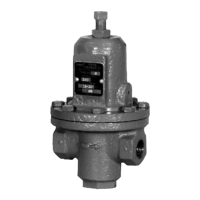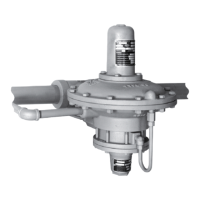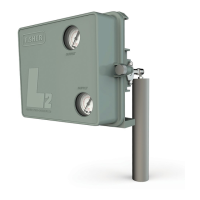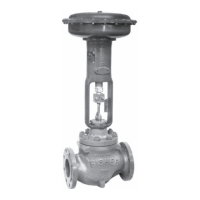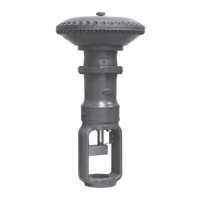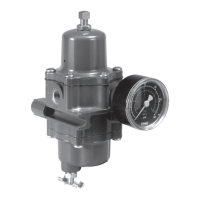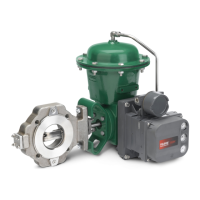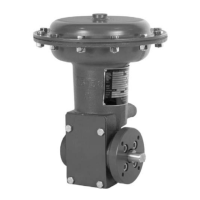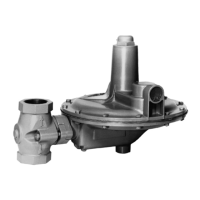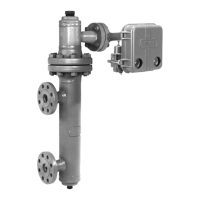Type 92S
10
12. The pressure setting of the regulator is
determined by:
• The pilot control spring adjustment on a
standard pilot, or
• The pressure-loading device in conjunction
with the control spring adjustment on a pressure-
loaded pilot. In both cases, check these settings
to make sure they are correct for the application.
Startup and Adjustment
Note
The maximum inlet pressure for a
specic construction is stamped on the
main valve nameplate. Use pressure
gauges to monitor upstream and
downstream pressures during startup.
Adjustment
On a regulator with any kind of Type 6492L,
6492H, or 6492HT pilot, loosen the hex nut (key 16,
Figure 4). Turn the adjusting screw (key 15, Figure 4)
into the spring case to increase the downstream
pressure. Turn the adjusting screw out of the spring
case to decrease the downstream pressure. When the
required downstream pressure is maintained for several
minutes, tighten the hex nut to lock the adjusting screw
in position.
On a regulator with a pressure-loaded Type 6492L,
6492H, or 6492HT pilot, also refer to the instruction
manual of the pressure-loading device for downstream
pressure adjustment procedures. Make sure that the
combined pilot control spring setting pressure and
spring case loading pressure do not exceed 25 psig
(1,7 bar) for the Type 6492L pilot, 150 psig (10 bar) for
the Type 6492H pilot, or 25 psig (17,2 bar) for the
Type 6492HT. For example, a 5 psig (0,34 bar) spring
setting and a 10 psig (0,69 bar) pressure loading result in
a regulator pressure of 15 psig (1,0 bar).
Safety Override Pilot Startup
and Adjustment
1. Loosen adjusting screws of the Type 6492HM
(or 6492HTM) safety override pilot and Type 6492H
(or 6492HT) intermediate pilot on the upstream
valve until there is no spring load. The screws
should turn freely by hand.
2. Loosen the adjusting screw of the Type 6492H
(or 6492HT) pilot on the downstream valve until
there is no spring load.
3. Tighten the Type 6492HM (or 6492HTM) safety
override pilot of the upstream valve all the way in to
its highest spring setting.
4. Tighten the Type 6492H (or 6492HT) pilot of
the upstream valve all the way in to its highest
spring setting.
5. Tighten the Type 6492H (or 6492HT) pilot
of the downstream valve to the desired
downstream pressure.
6.* Loosen the Type 6492H (or 6492HT) intermediate
pilot on the upstream valve to the desired
intermediate pressure (normally 50% of
inlet pressure).
7. Loosen the Type 6492HM (or 6492HTM) safety
override pilot of the upstream valve until there is no
spring load.
8. Tighten the Type 6492H (or 6492HT) pilot of the
downstream valve all the way in to its highest
spring setting.
9. Tighten the Type 6492HM (or 6492HTM) safety
override pilot of the upstream valve to desired
pressure as specied per ASME Boiler and
Pressure Vessel Code, section VIII.
10.* Loosen the Type 6492H (or 6492HT) pilot of the
downstream valve to the desired downstream
pressure setpoint.
Startup with New Regulator Installation
1. Remove all pilot control spring compression by
turning the adjusting screw out of the spring case
according to the adjustment procedure.
2. Slowly open the upstream block valve.
3. Open the downstream block valve.
4. Open the control line shutoff valve.
Note
Before nally adjusting the pilot setting,
allow enough time for the pilot and
main valve to heat up and boil off any
condensate build-up.
5. If a bypass is used, slowly close the bypass line
block valve.
6. Perform the adjustment procedure until the
downstream pressure reaches the desired setting.
* Fisher
®
recommends establishing setpoint by tightening the adjusting screw.
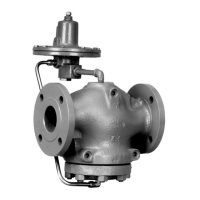
